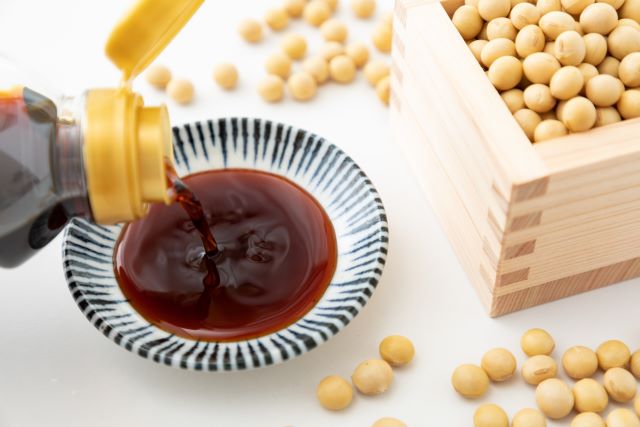
By the time you know some of the jargon used in sushi restaurants, you are already fully immersed in the world of sushi. The first jargon you will probably learn is Murasaki. Jargon is a word, phrase, or jargon that is understood only among certain professionals and their peers, so it is used among people who work at sushi restaurants. It is not used by customers, of course.
Now, what does Murasaki mean in a sushi restaurant? Actually, “Murasaki” is a jargon for soy sauce. So, we did some research to find out how soy sauce came to be called Murasaki. Originally, soy sauce was a food culture of the late Edo period, so there should be plenty of documentation of its use. However, even after researching, ” Murasaki ” ‘s origin was unclear. There are various theories, but here are some of them.
- There is a theory that soy sauce has the alias “Murasaki” because of soy sauce’s reddish-brown color.
In ancient and medieval times, the reddish-brown color was called “purple” in Japan, and the color of soy sauce dropped on a small plate was reddish-brown, which is why soy sauce was called “Murasaki” in Japan.
This may seem surprising since soy sauce appears to be black. Generally, dark soy sauce has a clear reddish-brown color. If you put it in a glass or something and look at it through the light in a bright place, you will see it has a beautiful reddish color.
- Some people believe that the alias “Murasaki” for soy sauce comes from purple being a noble color.
During the Edo period, although Edo became the political center of Japan, it still lagged behind Kyoto, Osaka, and other cities in the Kamigata region in terms of culture. The leaders of the Edo shogunate, who wanted to build a unique culture in Edo, apparently conceived the idea of making purple, which had long been considered a symbol of nobility, the symbolic color of Edo culture. It is said that the 8th shogun, Yoshimune, had purple dye studied in the Edo Castle.
It is also known as Edo purple (Edomurasaki), the color of the headband that the main character wears in popular Kabuki performances. There is no reason why the Edomurasaki color used by actors in Kabuki, the greatest entertainment of the Edo period, should not be popular. Edomurasaki is also known as the color that symbolizes the aesthetic sense of the chic Edokko, characterized by its deep blue tone in contrast to the reddish Kyoto purple (Kyomurasaki).
In this way, purple culture grew up in Edo. It is widely believed that this cultural background and the fact that dark soy sauce, which was an expensive and precious seasoning at the time, was almost purple, gave rise to the alias Murasaki. As a synonym for “precious,” dark soy sauce in the Kanto region came to be called Murasaki.
- Some people believe that Murasaki, another name for soy sauce, comes from the black soybeans of Tamba.
Tanba no kuromame are large, high-grade soybeans originating from the Tanba region of Hyogo Prefecture. It is said that the name “Murasaki” was derived from the purple color of soy sauce made from these black beans.
- There is a theory that the name “Shihou” (It means purple mountain) is derived from the elegant name for Mount Tsukuba.
Shihou is said to have originated from the purple color of the surface of the mountain when illuminated by the setting sun. It is also speculated that purple was an appropriate color for Mt. Tsukuba, which has also been revered as a sacred mountain. The theory is that soy sauce was produced in large quantities near the foot of Mt. Tsukuba during the Edo period, giving soy sauce the alias “Murasaki”. Shihou (紫峰) is also used today in the Shibanuma shoyu brand located at the foot of Mt. Tsukuba.
Finally, it is said that soy sauce came to be called Murasaki actually after the Meiji period (1868-1912). If this is correct, the second theory seems to be wrong. Many soy sauce manufacturers have been around since the Edo period, but their websites do not mention the origin of Murasaki at all. It is Jargon after all, so it is not for outsiders to make claims. In addition to Murasaki, one should avoid using Agari (which means three things in Japanese: Green tea in a sushi restaurant, dead fish, and a finished dish), Oaiso (Check), Namida (Wasabi), and Aniki (sushi material that has been prepped first, i.e., old).
Related contents:
Types of Shoyu (Soy sauce)